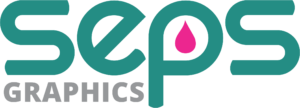The Rise of DTF Printing: Revolutionizing the Garment Decoration Industry with its Innovative Technology and Customization Capabilities.
The garment decoration industry has seen a significant transformation with the rise of direct-to-fabric (DTF) printing technology. This innovative printing method has revolutionized the way designs are transferred onto garments, offering numerous benefits and opportunities for businesses and consumers alike. In this blog, we will explore the impact of DTF printing on the garment decoration industry and how it is changing the landscape of textile printing.
DTF printing, also known as direct-to-garment (DTG) printing, involves the direct application of ink to the fabric, bypassing the need for traditional transfer methods such as heat press or screen printing. This process allows for high-quality, detailed designs to be printed directly onto garments with exceptional color vibrancy and durability. As a result, DTF printing has quickly gained popularity among garment decorators, fashion designers, and apparel manufacturers looking to produce customized, on-demand products with unmatched precision and efficiency.
One of the key advantages of DTF printing is its versatility and ability to accommodate small batch orders and personalized designs. This level of customization was previously difficult to achieve with traditional printing methods, making DTF printing a game-changer for businesses aiming to offer unique, made-to-order products to their customers. Additionally, the speed and cost-effectiveness of DTF printing have significantly reduced production times and overhead costs, making it an attractive option for businesses of all sizes.
Furthermore, the environmental impact of DTF printing cannot be overlooked. Unlike traditional printing methods that often involve harsh chemicals and excessive waste, DTF printing utilizes water-based, eco-friendly inks and minimizes the use of resources, making it a more sustainable option for the garment decoration industry.
The rise of DTF printing has also opened up new possibilities for designers and artists to unleash their creativity and bring their visions to life. The ability to produce intricate, full-color designs with unparalleled detail has empowered creators to explore new artistic avenues and push the boundaries of garment decoration.
As consumer preferences continue to shift towards personalized and unique products, the demand for DTF printing is expected to grow even further. This technology has not only disrupted the traditional garment decoration industry but has also created opportunities for entrepreneurs and businesses to thrive in a rapidly evolving market.
In conclusion, the rise of DTF printing has undeniably changed the garment decoration industry, offering a more efficient, sustainable, and versatile method for producing high-quality, customized garments. As technology continues to advance, we can expect to see further innovations in DTF printing, driving the industry towards even greater heights of creativity and customization. The future of garment decoration is undoubtedly being shaped by the remarkable capabilities of DTF printing, and it is an exciting time for all those involved in the textile printing industry.
